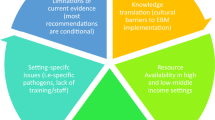Abstract.
Objective: To study the effect of sampling rate of laboratory and haemodynamic data on severity scorings and predicted risk of hospital death. Design: Prospective study. Setting: Medical-surgical intensive care unit (ICU) with 23 beds in a university hospital. Patients: Sixty-nine consecutive emergency admission patients. Interventions: Blood samples were drawn from indwelling arterial lines for the laboratory tests of all variables contained in the APACHE II and SAPS II scores at 2-hourly intervals from the time of admission up to 24 h or earlier discharge or death of the patient. Haemodynamic data and temperature were collected either manually by the attending nurse once an hour or as 2-min median values automatically using a Clinical Information Management System (CIMS, Clinisoft, Datex-Ohmeda, Helsinki, Finland). Three sets of severity scores were obtained. (1) "Traditional" scores (haemodynamic data from manual records and laboratory values from tests taken at admission and subsequently on clinical basis only). (2) "CIMS" scores (haemodynamic data from 2-min median values and laboratory values prescribed on clinical indication) and (3) "High rate" scores (haemodynamic data from 2-min median values and laboratory values at 2-hourly intervals). Probability of hospital death was calculated using the SAPS II and APACHE II scores, respectively. Results: Increasing the sampling rate of haemodynamic monitoring interval to 2-min from once per hour resulted in 7.8% and 11.5% increases (p<0.001) in the APACHE II and SAPS II scores, respectively. The combined effect of increased sampling rate of haemodynamic and laboratory tests on the APACHE II and SAPS II scores was 14.4% and 14.5% compared to traditional scores (p<0.001), respectively. The probability of hospital death increased from 0.23 and 0.21 ("traditional" SAPS II and APACHE II) to 0.31 and 0.25 ("high rate" SAPS II and APACHE II), respectively, and, because eight patients died, standardised mortality ratio (SMR) decreased from 0.53 to 0.41 (SAPS II) and from 0.60 to 0.50 (APACHE II). Conclusions: Increased sampling rate results in higher scores and lower SMR. Comparisons between hospitals using severity scores are biased due to differences in the sampling rates.
Similar content being viewed by others
Author information
Authors and Affiliations
Additional information
Final revision received: 21 August 2000
Electronic Publication
Rights and permissions
About this article
Cite this article
Suistomaa, M., Kari, A., Ruokonen, E. et al. Sampling rate causes bias in APACHE II and SAPS II scores. Intensive Care Med 26, 1773–1778 (2000). https://doi.org/10.1007/s001340000677
Received:
Accepted:
Published:
Issue Date:
DOI: https://doi.org/10.1007/s001340000677




